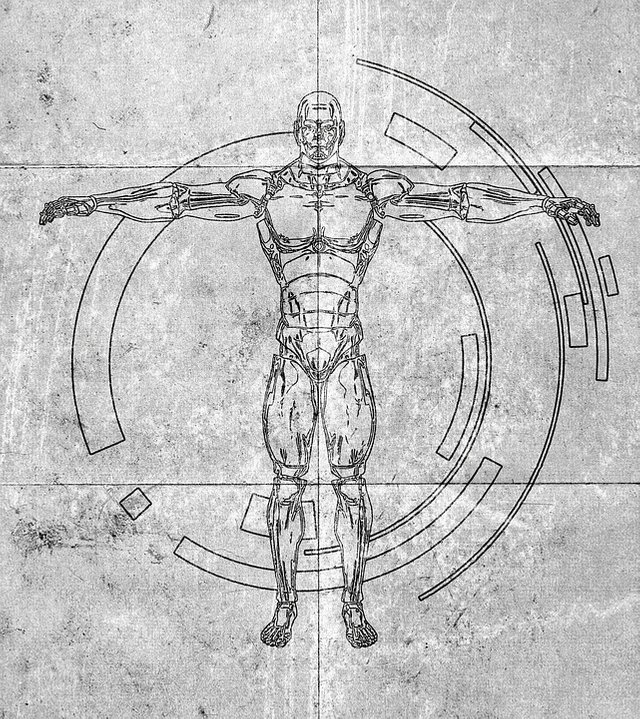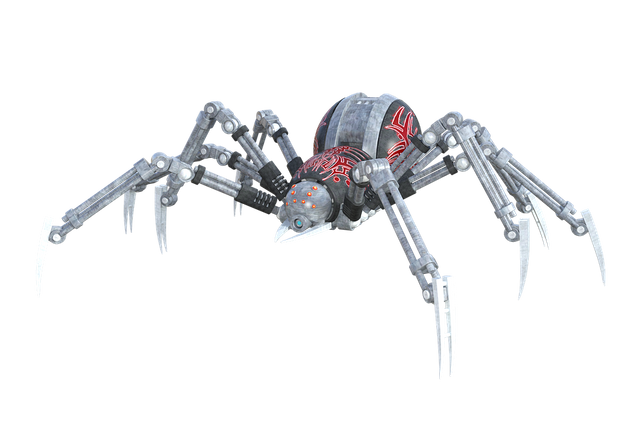Nature's Cures, Soft Robotics & Biohybrids
Image from Pixabay by Pete Linforth for public domain use.
When I was a child, I would read Issac Asimov, Ray Bradbury, Carl Sagan and other science fiction, I loved science fiction. I never expected such things would start to become a reality today, despite coming from the generation of 70s children that played with star wars toys, and Pac man was our most advance computer game, we would spend more time outside in nature, making dens and climbing trees.
I have a great affinity with nature and grew up totally intrigued by biology and the natural world of plants and animals, so I studied biology and ecology. Everything we need to make us well when we are sick can be found available in nature, especially in plant medicine, here in Ecuador when you spend a few days with an indigenous person of the Amazon rainforest, you learn more from them about plant medicine than anyone in the West could possibly learn from a Western trained herbalist, this is one reason why it's so important to preserve medicinal plant knowledge and the rainforest, the tribes people have so much knowledge since they are experts at living with nature and using plants to heal. There are probably thousands of undiscovered cures for illnesses hidden in the deepest part of the Amazon jungle. Aside from this, it's becoming common knowledge today that CBD oil can cure cancer, epilepsy and help children with autism.

Aloe Vera from pixabay by Wanderer Creative for public domain use
I have just been treating my cat with Aloe Vera gel, using the raw gel mixed with fish to help treat my cat’s leukemia with incredible results. Aloe contains natural Acemannan, a substance taken from the Aloe Vera leaf and previous studies, it can stimulate mouse immune cells to make cancer killing chemicals (cytokines).
One test tube study has shown that aloeride (a starch compound found in aloe juice) can stimulate the immune system to produce cancer killing chemicals. Another compound made from Aloe Vera, di 2-ethyl hexyl phthalate (DEHP), has been found to stop the development of leukaemia cells in test tubes. Most things we need to heal, we can find in nature, but in the case of accidents and needing surgery we definitely need doctors to help us.
There are currently teams of scientists around the world working on some very advanced forms of Biosynthetic robots which are created from a combination of 3D printed genomes, cells and synthetics to create their bodies. A Harvard Professor, Kit Kevin Parker, PhD at the School of Engineering and Applied Sciences at Harvard joined forces with other scientists at Scientists from the University of Illinois at Urbana-Champaign, the University of Michigan, and Stanford University's Medical Center. Together they have created an artificial Stingray type creature, it is made from a 3D gold printed skeleton and cells taken from the rat heart were grown on the outside of the skeleton and an external rubber layer printed for the ‘skin’. They successfully achieved a muscular circuitry from the rat heart cells that respond to light, allowing the biohybrid creature to move in an undulating fashion. To test its locomotives they created an obstacle course for the biohybrid. The study authors write, "Our ray outperformed existing locomotive biohybrid systems in terms of speed, distance traveled, and durability (six days), demonstrating the potential of self-propelled, phototactically activated tissue-engineered robots."
The Biohybrid Stingray
The team have also built an octopus like robot from silicon gels that moves with the mobility of gases being pumped through tiny tubes in its body and limbs. It has a type fuel system called a "fluidic logic circuit" a little fuel cell filled with hydrogen peroxide, where valves act as logic gates in a heart like chamber, this solution in turn reacts with particles of platinum left in the system by the printing process.allowing gas to flow and inflate compartments inside the eight separate limbs.
Presently scientist around the world are working on similar projects have been for soft robot: inflatable "muscles",using a combination of biosynthetics or completely synthetic robots using 3D printing, scientific engineering and fuel cells, or soft light sensors.
The 100 percent Synthetic Octobot
This means we are now in the age of robotics, one day you could go into a hospital emergency room and have the choice of having a robot perform surgery on you. I personally prefer a human doctor rather than the possibility of having a synthetic creature enter my body to work on me, but this is the goal and intention of soft robotics, to create biohybrids or synthetic robots that can get into parts of the body that are difficult for surgeons to reach.
Some scientists are creating similar robots disguised as insects to spy on people or deliver a disease via a robotic or fully genetically engineered mosquitos, this is one malevolent innovation that has been created. Getting even darker there are hundreds of journals published and available online that also goes into detail about self assembling nanobots that can create artificial viruses once they enter the human body, causing illnesses and autoimmune diseases that some people claim are being used in geoengineering spraying programmes.
This ofcourse brings up some ethical questions about using animal parts for robotics and how we live with that. And if we already have nanobot technology, we can never know when its being used on us? This can open up exploration into the pros and cons of biohybrids and robotics, please feel free to share your opinions and comment below with your own perspective and research if you have knowledge of some of the benefits of these new innovations. In my personal perspective, I can see the positives mainly in operative medicine and there are plenty of malevolent negatives such innovations can be applied to, in the case of biological warfare among other things.

Image by Intographics on pixabay for public domain.
Although it is inspiring to see innovative technology in robotics and artificial intelligence with the goal to solve some of humanities problems, how far do we go while playing God? I am undecided as yet to the delicate ethical issues, such as if we create a being that is a combination of biological 3D printed genomes from artificially printed DNA and it becomes sentient and conscious what are the implications and will it suffer if it is sentient and conscious? I prefer the idea of scientists using entirely synthetic materials for soft bodied robots because of the issue of sentience and consciousness as we do not yet understand how consciousness itself truly manifests in nature.
by Carlita Shaw
Author of The Silent Ecocide, a crisis of human consciousness
https://www.amazon.com/Silent-Ecocide-Environmental-Crisis-Consciousness/dp/1512365718

How do we know you are actually the author of that text? Do you have an official twitter account or some way to validate your identity?
Yes I do you can go to @SBKRadio or my Facebook https://www.facebook.com/thesilentecocide
if you want to check out my other writings go to The Silent Ecocide at Wordpress.com or check out my book online The Silent Ecocide on Amazon.com or https://www.carlitashaw.com Thanks